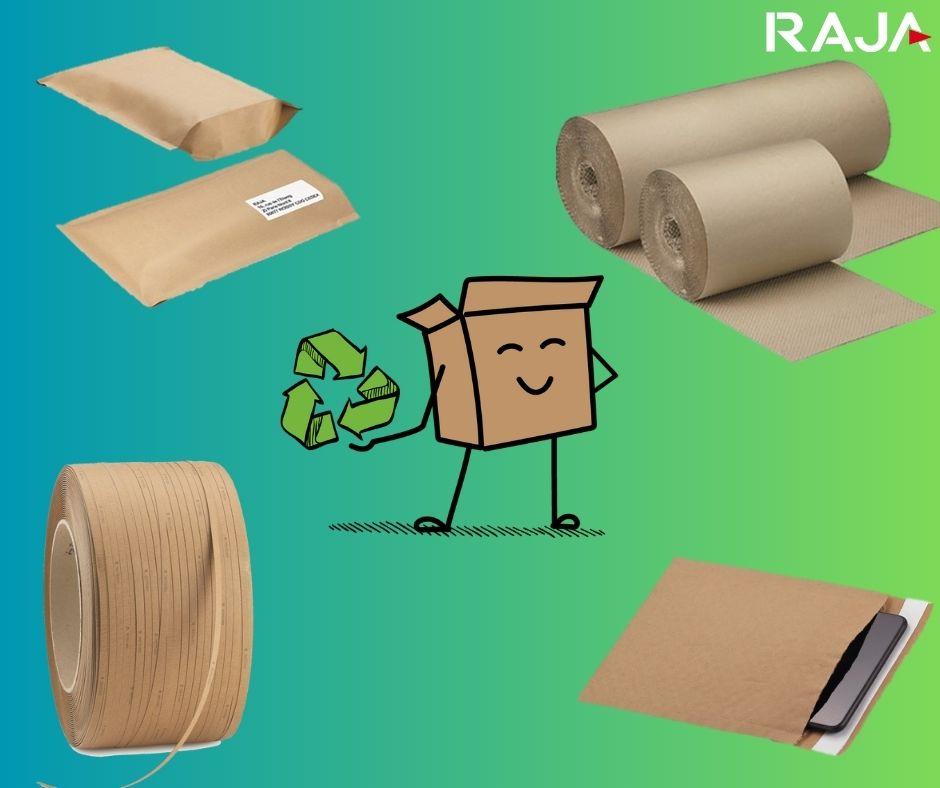In recent years, e-commerce in Sweden has exploded, but in 2022 we did not see as big an increase as during the “pandemic years” 2020 and 2021. Large increases in conditions in many areas place high demands on you as a company to work smart to come out as a winner. We at RAJA have taken a look at some of the most important e-commerce trends that we believe will characterise 2023, and try to advise you who have or work in an e-commerce.
1. The economic crisis: A trend that will characterise 2023
The pandemic is not completely over, war in Ukraine, global delivery delays, increased raw material prices and changes in trade agreements between countries: many of the problems that arose in 2022 will continue to have a negative impact on e-commerce in 2023. While all this is happening, customers have not lowered their expectations of companies, they want fast deliveries, low prices and a good customer experience.
How will you meet these expectations? You need to be more alert than ever, both in your sourcing strategy and in your choice of logistics provider. In 2023, a key to success will be to be ready for all kinds of changes that may occur in the logistics environment and to be able to resolve them quickly.
2. Recycling and environmental responsibility: Still growing trends in e-commerce
The second major e-commerce trend for 2023 doesn’t come as a surprise anymore: it’s the environment, where customers are more conscious than ever. This is true both in physical stores and online.
Postnord’s ebarometer shows that around 25% of all consumers want online stores to work more actively with sustainability. The environmental trend is also proven by the large increase in companies that focus on selling second-hand goods. It also shows that a third of people shop more second-hand during tough times, such as on Sellpy or Tradera.
Want to make your e-commerce more sustainable with its packaging? Check out these options:
Brown bubble envelopes made of 100% paper
Want to know more? Read more about how they can replace the most common packaging products with more environmentally friendly alternatives. HERE.
3. e-retailers who rent
For some years now, we have seen an increasing number of online retailers renting out products. This is instead of the customer having to buy new, and it usually involves clothing, accessories or tools. This trend will probably only grow in 2023, as it is both environmentally friendly and economical.
This trend places high demands on good logistics. In addition, the customer benefits must be communicated through all market channels.
Recommendations if your website is considering starting a rental programme:
- Implement a clear and precise return policy, including all information about the condition of the products and return times that must be respected.
- Explain your concept well in all your communication channels, with pedagogy, to convince customers who are still hesitant to switch to this way of consumption.
- Send the products in returnable packaging, such as “returnable” e-commerce bags, or self-adhesive quick boxes, both of which protect the goods in two shipments.
4. Alternative payment methods: a growing trend
As e-commerce technology evolves, so do consumer expectations. By 2023, your customers will expect online stores to offer different payment methods to choose from. Abandoned shopping baskets are a common problem in online shopping and a common reason is that customers are not offered their preferred form of payment. Card payments have been common for a long time, but offering solutions such as Swish, Apple Pay and Google Pay has also become increasingly common.
So think about diversifying the payment methods available in your online store to reduce the number of customers cancelling their purchase. The different payment methods become selling points that should be highlighted on your website.
5. Social commerce: when sales are made on social media
Recently, an e-commerce trend called social ecommerce or social shopping has emerged. This means selling products directly on social media, without going through a third-party sales platform. In 2023, this trend is likely to become even more popular, such as live shopping on TikTok, Facebook Live or Instagram Shopping.
At the same time, the trend of influencer marketing continues and a large part of social shopping is done in conjunction with influencers.
Maybe this trend is something for your online shop to try in 2023?
6. Omnichannel sales continue to grow.
For years, customers have preferred to shop across multiple sales channels, both online and offline. With the increased use of mobile phones for online shopping and the strong growth in the number of sales platforms (traditional stores, online stores, marketplaces, social media, etc.), this omnichannel trend will continue to grow in 2023.
For online retailers, this trend presents some challenges. So in 2023, you should keep in mind:
- Standardise your pricing across all platforms and make sure your product information is always updated everywhere.
- Use technology to create a great shopping experience for your customers. For example, integrate QR codes on your packaging to encourage the customer to continue their shopping experience online once they have received their order, or to create a link between your physical points of sale and the online store.
- Implement the best possible omnichannel logistics, with careful inventory management across platforms to avoid running out of stock and provide a consistent customer experience across all channels.
7. Subscription can deliver e-commerce success in 2023
Consumers are used to different subscription solutions and this is spreading to new industries and products. This is reflected in the success of pernumeration of food boxes or online stores that automatically replenish the customer’s supply of products at the end of a period. This can be seen as a trend in the US where Amazon has started to offer subscription offers for beauty products.
By 2023, this type of e-commerce solution is likely to become even more widespread. But this also requires online retailers to offer more differentiated products and solutions. Companies must also have well thought-out digital marketing to explain the benefit, good logistics and a flawless customer experience.
8. VR and metaverse: new trends to watch for
In 2022, we saw the emergence of the metaverse, based on the concept of virtual reality. Although the metaverse is not yet fully developed, in 2023 we will see new trends related to this virtual universe, where consumers will be able to meet to exchange, experience and buy products.
For example, we already know that IKEA has launched an app where customers can virtually “place” IKEA products in their home.

As an online retailer, it’s important that you follow these new technologies so that you consider using them when the time is right for you and your customers.
Are you ready to try any of the new trends?
If so, we at RAJA wish you good luck!















